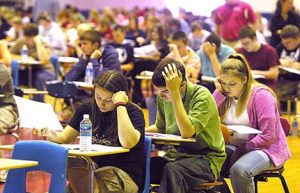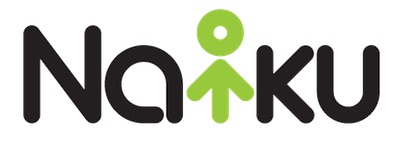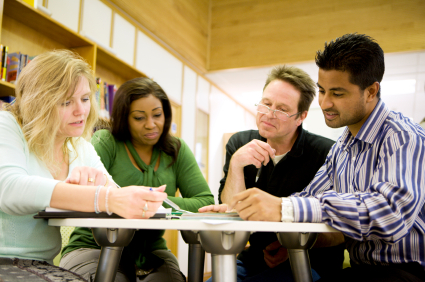Using Assessment to Improve Student Learning and Enhance Classroom Instruction
In the previous Blog, I talked about creating and sustaining a balanced assessment system—i.e., different ways to assess, balancing assessment types, and conditions and practices that need to be in place in order to implement and sustain a balanced assessment system.
This week, I want to go inside the classroom and talk about things that teachers can do to gather information about student learning and to better understand and support this learning. Here, I’m talking about knowing what each student knows then adjusting instructional practices accordingly.
There are many reasons why we test students. The primary reason is to get information about what they have learned. Unfortunately, the information we obtain from many tests is difficult to actually use to promote learning. Two reasons for this come to mind:
- Only a very small amount of testing time is allocated to each content standard or skill covered in the classroom curriculum; and
- The information we obtain from most tests comes too late to be useful (Leahy, Lyon, Thompson, and Wiliam, 2005).
 Sure, we can use these test results to make broad adjustments in our curriculum, but in order to fine-tune classroom instruction to meet specific student learning needs, “. . . we need more fine-grained assessments, and we need to use the information to modify instruction in real time” (ibid.).
Sure, we can use these test results to make broad adjustments in our curriculum, but in order to fine-tune classroom instruction to meet specific student learning needs, “. . . we need more fine-grained assessments, and we need to use the information to modify instruction in real time” (ibid.).
So, what kind of information about students is readily available to teachers? Look around most classrooms and you’ll see students talking to each other, working independently, asking and answering questions, acting up, looking perplexed, sitting alone, gazing out the proverbial window, smiling, frowning, looking bored, looking engaged, flirting, drawing pictures, . . .
Everything that we see students doing can be a possible source of information about what they are and are not learning.
The point here is that our classrooms provide an almost limitless source of information about students and what they know and do not know. In essence, it’s our work as educators to know what our students know. It’s this knowledge that creates a map for us to use to adjust our curriculum, instruction, and assessment practices to more closely meet our students’ learning needs.
In addition to this huge array of information that educators can observe and use to better understand what their students know, there are several research-based, formative classroom practices that have been proven to enhance student learning. The following five classroom strategies can be implemented in classrooms for all grades and all content areas and can significantly and positively impact student learning (ibid.):
- Clarifying and sharing learning targets and specific criteria for success;
- Setting up and activating effective classroom discussions, questions, and learning tasks;
- Providing descriptive, actionable feedback to students that helps them understand their own learning and, through this understanding, learn better;
- Activating students to take responsibility for and own their own learning; and
- Helping students become instructional resources for each other.
 These classroom strategies are not new nor are they earth shattering. In a sense, their strength resides in their simplicity and in the fact that there is an ever-expanding research base that demonstrates the effectivess of these strategies in fostering significant improvement in what students learn.
These classroom strategies are not new nor are they earth shattering. In a sense, their strength resides in their simplicity and in the fact that there is an ever-expanding research base that demonstrates the effectivess of these strategies in fostering significant improvement in what students learn.
How can these classroom practices be supported?
Effectively insinuating these strategies into classroom practices won’t happen over night and won’t happen in isolation. Educators need support, and one of the most powerful means of support is in the development and effective practice of school-based learning communities.
It is through school-based learning communities that educators can
- Observe each other and give each other informative, actionable feedback on classroom practices;
- Develop a practice-based understanding of ways to use assessment to promote student learning;
- Try out the strategies identified above then discuss what they experienced and learned (see Black, Harrison, Lee, Marshall, & Wiliam, 2004);
- Use and discuss the results of using an online assessment system like Naiku’s to enhance formative and summative classroom assessment practices focused on understanding and improving student learning; and
- Develop a shared language for describing their classroom practices, a language that helps them reflect on, monitor, evaluate, and improve what they are doing in their respective classrooms.
The ultimate goal for educators is to improve student learning. Yet, to accomplish this goal, both educators and students need to develop a deep understanding of what students know and can do. And the means for both students and educators to come to this understanding is through the effective use of assessment.
Here, students and teachers become collaborators in learning, and both can benefit immensely from this partnership.
References
Siobhan, L., Lyon, C., Thompson, M., & Wiliam, D., Classroom Assessment: Minute by Minute, Day by Day, pre-published manuscript, 2005.
Black, P., Harrison, C., Lee, C., Marshall, B., & Wiliam, D. (2004). Working inside the black box: assessment for learning in the classroom. Phi Delta Kappan, 86(1), 8-21.


